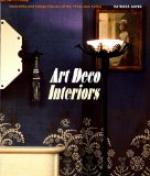As there are many kinds of dining-rooms, each good if planned and worked out with an art instinct, so there are many kinds of tables. The usual sort is the round, or square, extension table, laid with fine damask and set with conventional china, glass and silver, rare in quality and distinguished in design. For those who prefer the unusual there are oblong, squarely built Jacobean and Italian refectory tables. With these one makes a point of showing the rich colour of the time-worn wood and carving, for the old Italian tables often have the bevelled edge and legs carved. When this style of table is used, the wood instead of a cloth, is our background, and a “runner” with doilies of old Italian lace takes the place of linen.
In Feudal Days, when an entire household, master and retainers, sat in the baronial hall “above and below the salt,” tables were made of great length. When used out of their original setting, they must be cut down to suit modern conditions. In Krakau, Poland, the writer often dined at one of these feudal boards which had been in our hostess’s family for several hundred years. To get it into her dining-room a large piece had been cut out at the centre and the two ends pushed together.
* * * * *
For those who live informally, delightfully decorative china can be had at low prices. It was once made only for the peasants, and comes to us from Italy, France, Germany and England. This fact reminds us that when we were travelling in Southern Hungary and were asked to dine with a Magyar farmer, out on the windy Pasta, instead of their usual highly coloured pottery, gay with crude, but decorative flowers, they honoured us by covering the table with American ironstone china! The Hungarian crockery resembles the Brittany and Italian ware, and some of it is most attractive when rightly set.
When once the passion to depart from beaten paths seizes us it is very easy to make mistakes. Therefore to the housekeeper, accustomed to conventional china, but weary of it, we would commend as a safe departure, modern Wedgwood and Italian reproductions of classic models, which come in exquisite shapes and in a delicious soft cream tone. If one prefers, it is possible to get these varieties decorated with charming designs in artistic colourings, as previously stated.
For eating meals out of doors, or in “sun-rooms,” where the light is strong, the dark peasant pottery, like Brittany, Italian and Hungarian, is very effective on dull-blue linen, heavy cream linen or coarse lace, such as the peasants make.
Copper lustre, with its dark metallic surface; is enchanting on dark wood or coloured linen of the right tone.
Your table must be a picture composed on artistic lines. That is, it must combine harmony of line and colour and above all, appropriateness. Gradually one acquires skill in inventing unusual effects; but only the adept can go against established rules of art and yet produce a pleasing ensemble. We can all recall exceptions to this rule for simplicity, beautiful, artistic tables, covered with rare and entrancing objects,—irrelevant, but delighting the eye. Some will instantly recall Clyde Fitch’s dinners in this connection, but here let us emphasise the dictum that for a great master of the art of decoration there need be no laws.




